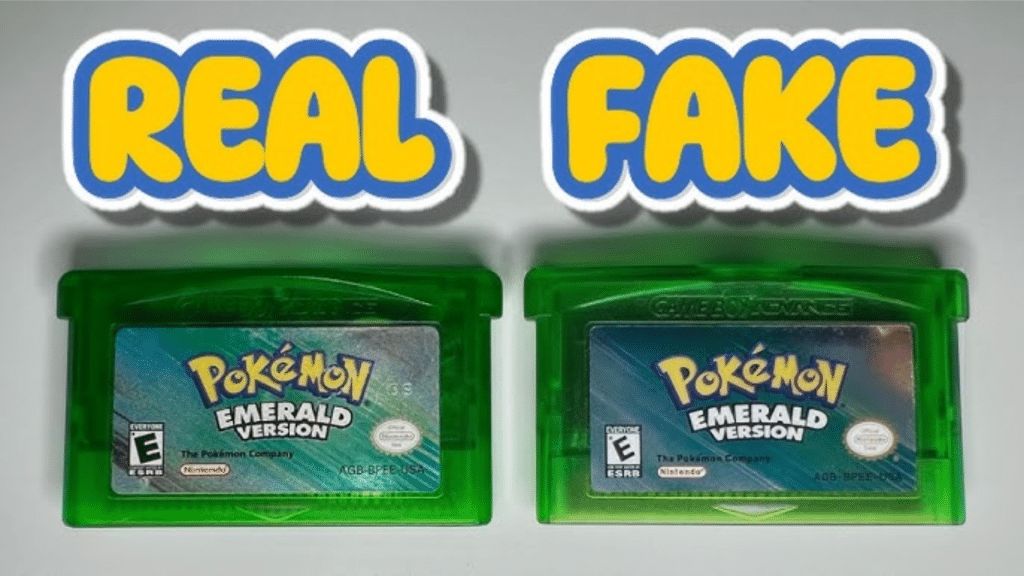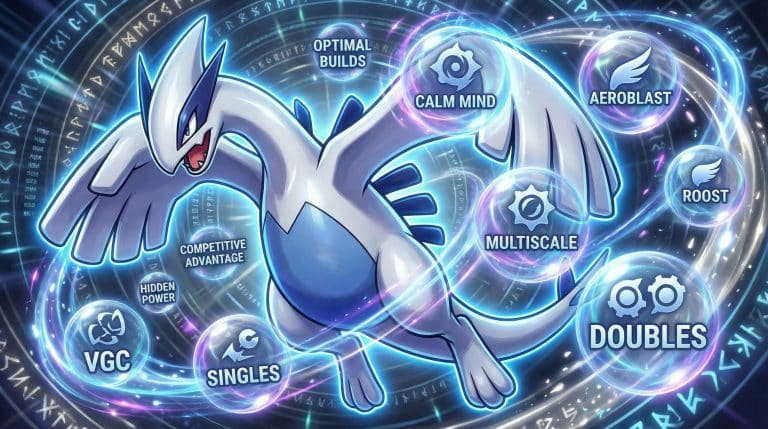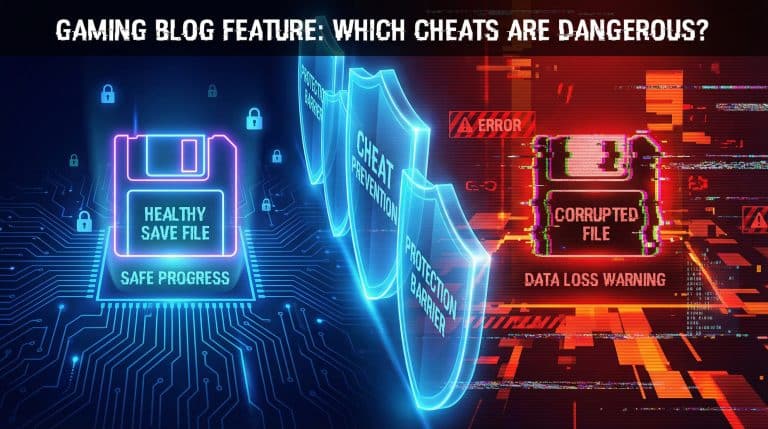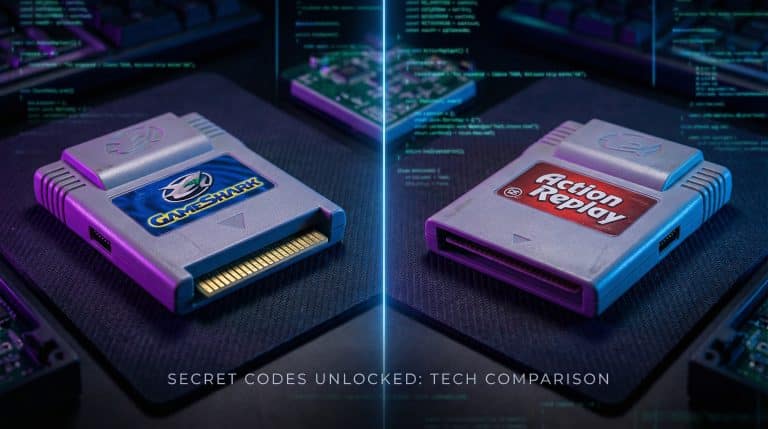Are you worried the Pokémon Emerald you’re buying might be a fake?
I’ve been there too, squinting at labels, checking screws, and feeling unsure right up until the cartridge loads. With bootlegs all over the place, it’s tough to tell what’s real and what’s not.
I’ve collected, traded, and tested dozens of Game Boy Advance games, and I’ve seen every kind of fake out there.
That’s why I put this guide together: to provide you with straightforward answers without the fluff.
If you want to avoid getting scammed, I’ll show you what to look for.
How to Tell If Your Pokémon Emerald Is Real or Fake
Knowing how to spot a real vs. fake Pokémon Emerald can save you time and money. I’ve broken down the process into two parts: exterior and interior checks, ensuring you always get the real deal.
Exterior Checks
These are the things I always look at first, before even thinking about opening the cartridge. You can catch a fake just by paying close attention to how it looks and feels.
1. Label Quality
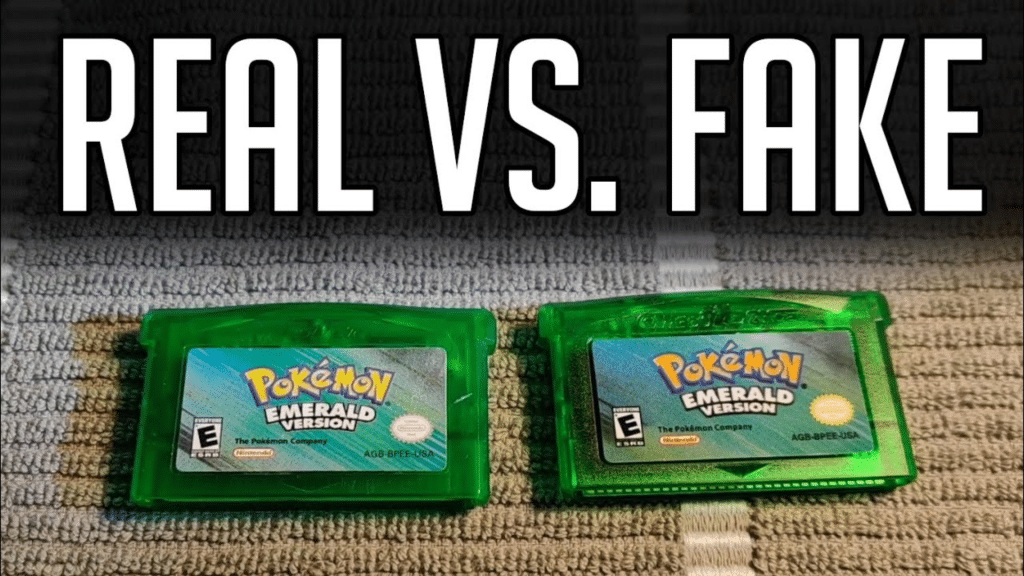
I hold the cartridge under bright light and tilt it slightly. A real Pokémon Emerald label has a slight reflective shine, and the print looks sharp and colorful.
The Pokémon logo is clear, not washed out. Fakes often mess this up; the label may look grainy, dull, or even slightly crooked.
I once got a copy where the colors looked too dark and the “E” rating symbol was blurry. That was an instant red flag.
If the label looks like it came from a home printer, I stop right there. It’s a simple but reliable first check.
2. Nintendo Seal
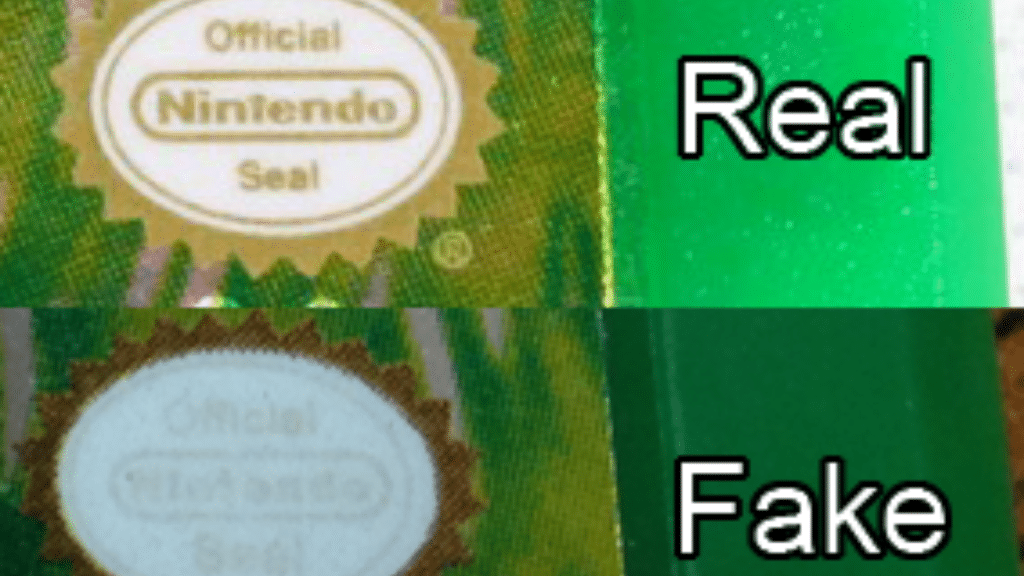
The gold “Official Nintendo Seal of Quality” should be crisp, centered, and printed cleanly.
I always compare it to a confirmed real cartridge. If the gold is faded, off-color, or the shape is even slightly off, I get suspicious.
On a real cart, the seal is embossed with clear details. I once saw a fake where the seal looked like a smudge; it was missing that pop and sharpness you expect. Fakes often rush the label design, and the seal suffers.
It’s small, but it matters. If the seal doesn’t look right, the rest of the cartridge probably isn’t either.
3. Cartridge Color
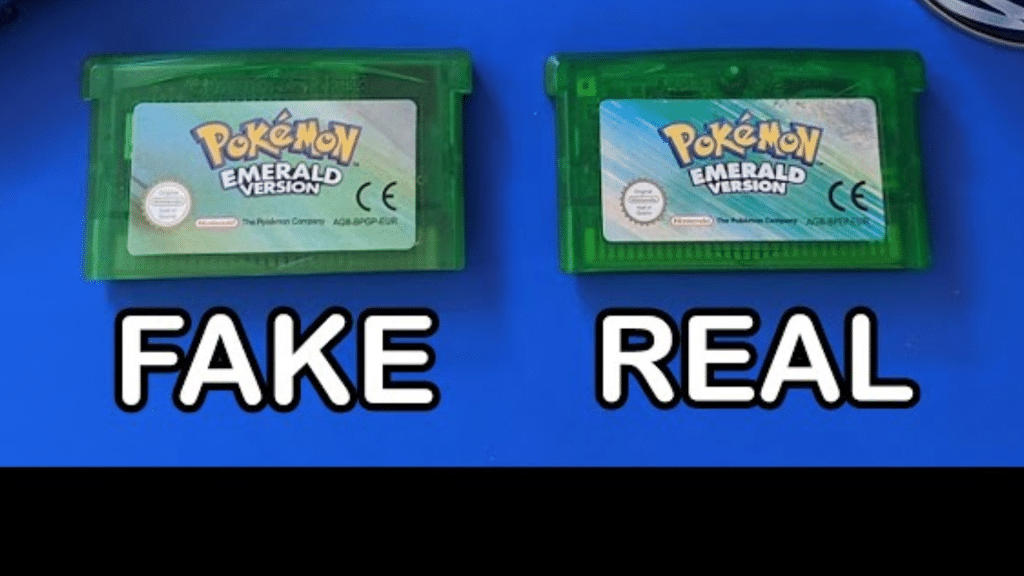
Pokémon Emerald should come in a clear green shell with a rich emerald color. Not see-through like glass, but visibly translucent.
The real thing has a polished plastic look that feels durable. If the green is too pale, too dark, or too cloudy, I immediately start to question it.
Once, I held up two copies side by side, and the fake was a weird green-gray color that just looked off.
Even if the label is convincing, a wrong shell color tells me it’s not a legitimate Nintendo product. It’s one of the easiest ways to spot a copy.
4. Screw Type
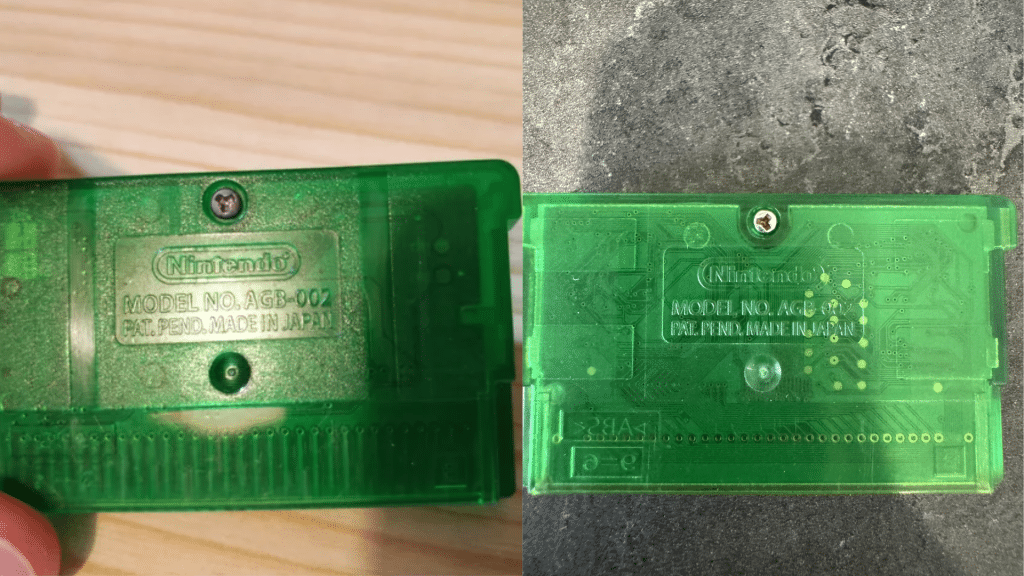
When I flip the cartridge over, I always check the screw holding it together.
A genuine Pokémon Emerald uses a tri-wing screw, a three-pointed star shape that requires a special tool to open. If I see a flathead or Phillips screw, that’s a huge red flag.
Fakes use whatever is cheapest or easiest to mass-produce. I once got a cart with a rusty Phillips screw, and sure enough, the inside was all wrong too.
This detail is easy to miss if you’re not looking for it, but once you know what a tri-wing screw looks like, it stands out right away.
5. Back Stamp and Imprint
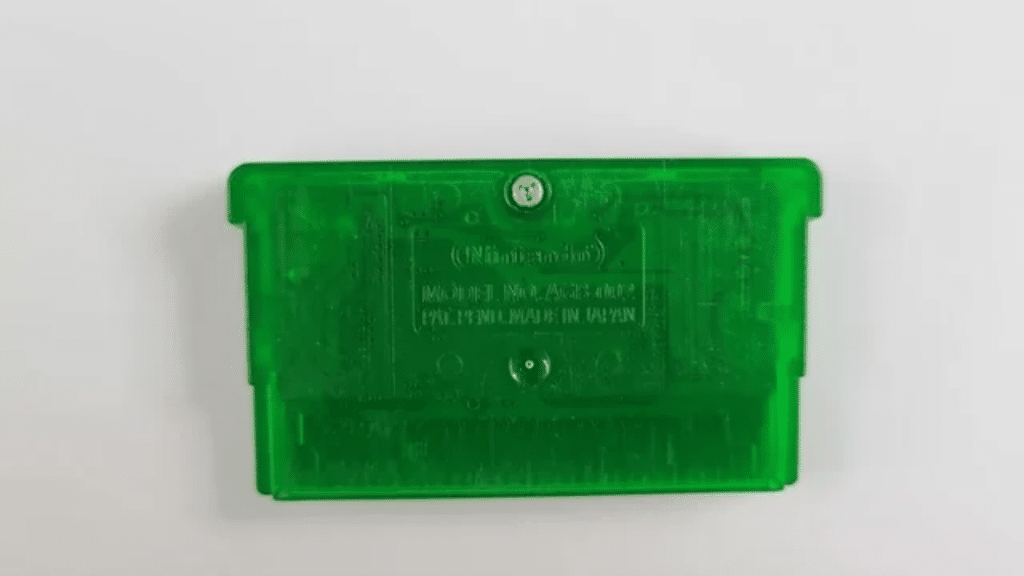
Real cartridges usually have a number or letter code molded directly into the back of the plastic shell. It’s subtle, but it’s there, clean and pressed into the plastic during manufacturing.
On fakes, the code is often missing, off-center, or looks melted. I’ve had copies where the imprint was so sloppy it was barely legible. Others had no stamp at all.
These codes help track manufacturing batches and are standard across Nintendo cartridges.
So if I don’t see one, or it looks off, I take that as a sign the shell wasn’t made to Nintendo’s standards.
Interior Checks
If I still have doubts, I open the cartridge. The inside reveals the truth every time. Let’s see what I look at closely once it’s open.
6. PCB Labeling
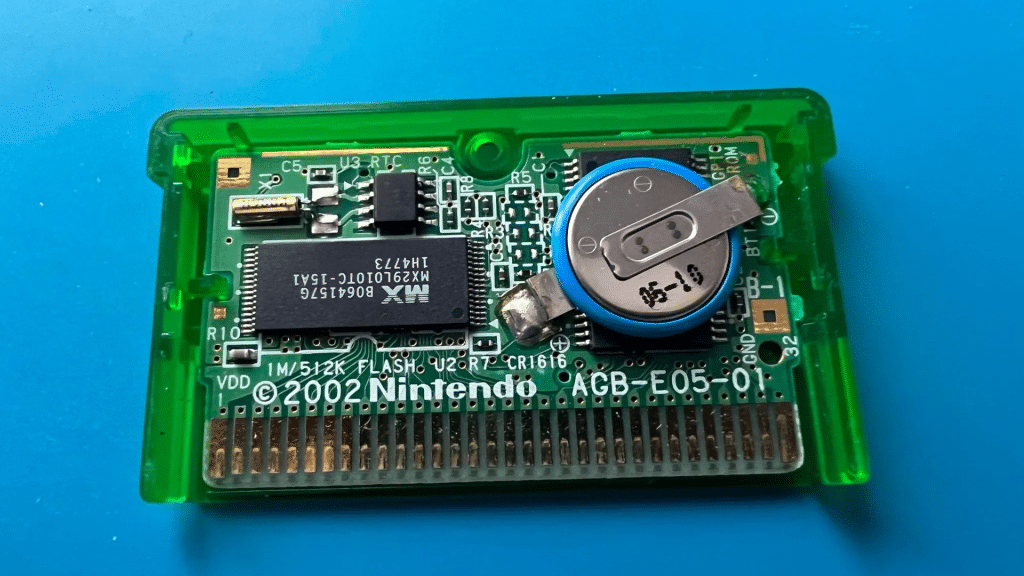
The circuit board inside a real Pokémon Emerald will usually have “Nintendo” and a model code like “AGB-E05-01” printed on it.
These are etched right into the board, not just stickers. I’ve opened up many fakes, and they’re often missing this labeling altogether, or they have odd codes that don’t match any known Nintendo pattern.
I once opened one that had just a plain green board with nothing on it, which told me it wasn’t made in a Nintendo-approved facility.
These labels show that the board was made properly and is part of the official manufacturing process.
7. Chip Markings
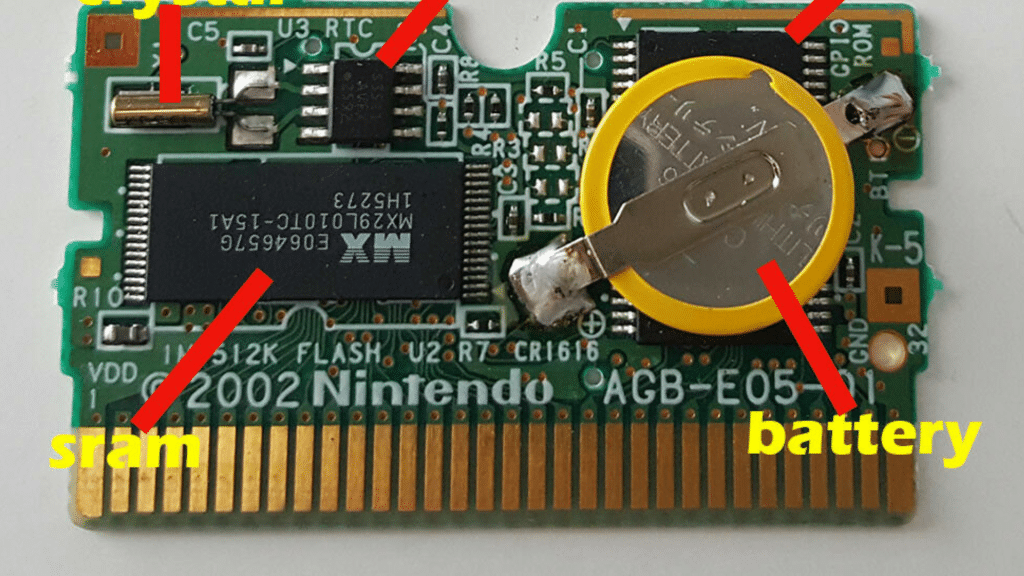
The real Pokémon Emerald has recognizable chip brands inside, like Sharp, Fujitsu, or Macronix.
These are legit electronics companies that Nintendo uses. I always read the writing on the main chip; if it’s blank, misspelled, or looks like it was sanded down, I know something’s not right. Fakes often use generic or unmarked chips.
I once opened a cart where the chip was crooked and held down with yellow glue; that’s not something you’ll ever see in a genuine copy.
Checking the chip markings gives me a strong signal about how carefully (or carelessly) the board was put together.
8. Date Codes
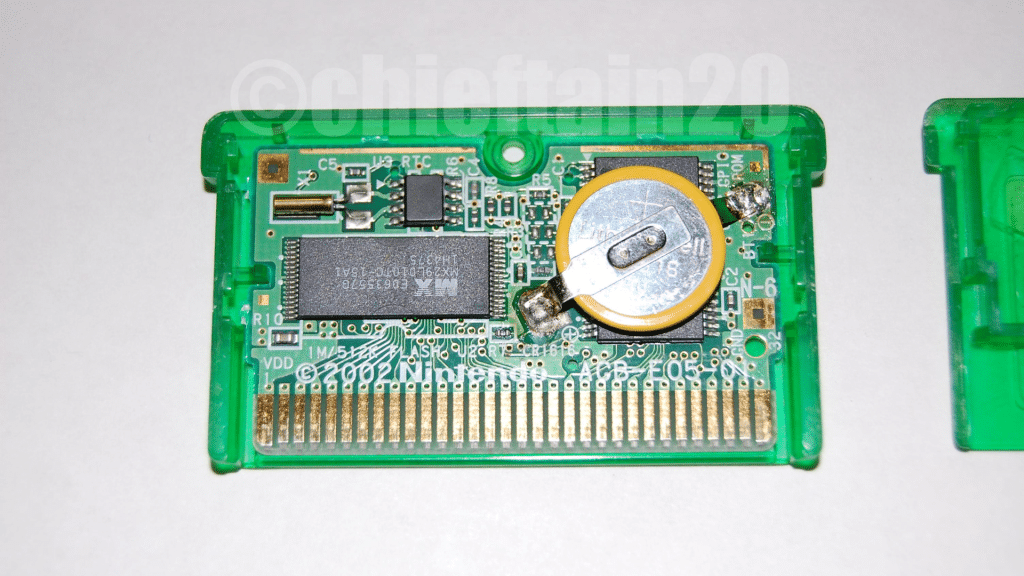
Nintendo boards have small etched codes showing the year and week of production. These usually match the game’s release window.
For Pokémon Emerald, I expect to see date codes around 2002 to 2005. If I open a cart and see a board marked 2008 or later, or no date at all, I know it wasn’t made when it should’ve been.
I once bought a cart with a 2012 code, and it was clearly a reproduction.
These date codes help confirm that the game is from the right time period. It’s a small detail, but it adds up when you’re checking for authenticity.
9. Overall Build
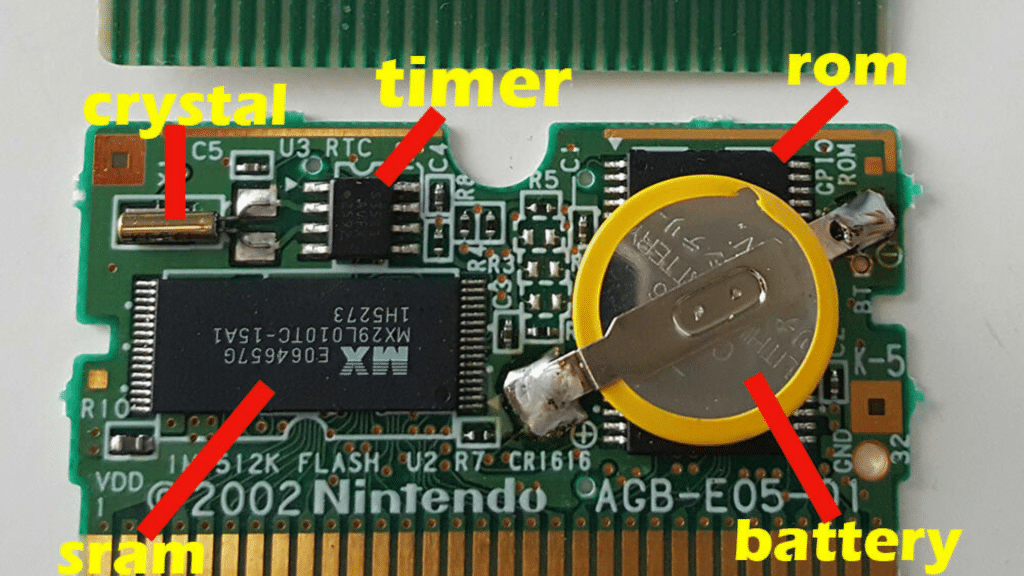
When I look at everything inside, the board, the chips, the connections, I can usually tell pretty quickly if it’s real or fake.
A genuine cart feels solid, neat, and professionally made. Fakes often feel rushed, with misaligned parts, wires sticking out, or weird glue blobs.
I’ve handled enough of these to know what a well-made game feels like. If anything inside looks cheap or messy, I trust my gut.
Even if the game runs, a sloppy build usually means corners were cut somewhere. I’d rather pass on a bad copy than regret it later.
Where to Buy Pokémon Emerald to Avoid Fakes
Over the years, I’ve learned that even if I know how to spot a fake, it’s easier to avoid one by buying from the right place. I don’t take chances with listings that feel off. Let’s see how I handle it:
I trust these sources:
- Local retro game stores (they usually test games)
- eBay sellers with strong feedback and clear return policies
- Game collecting forums or trusted Discord groups
- Sellers who show real photos of the cartridge from all angles
I avoid these:
- Listings with stock photos only
- Prices that seem too low
- Descriptions that say “reproduction” or leave out key details
I’d rather pay a little more than deal with the hassle of returning a fake.
Conclusion
You came here to figure out how to tell if a Pokémon Emerald cartridge is real, and now you’ve got the tools to do it.
I’ve shown you everything I check, inside and out, based on my own experience dealing with fakes.
When you’re spending good money on a game, the last thing you want is to get stuck with a knockoff that looks right but feels wrong. I’ve been there, and it’s frustrating.
That’s why it matters to check the label, the shell, the screw, and even the board inside. You don’t have to second-guess yourself anymore.
With this info, you can feel confident about what’s in your hands before you buy, trade, or play.


